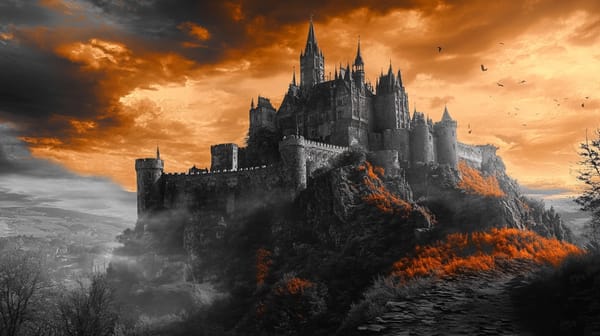Understanding Bitcoin’s latest crash: What really happened?

On Wednesday, May 19, 2021, the entire crypto market was thrown into a sea of red, with several digital assets recording double-digit losses. Bitcoin dropped to a low of $30,200 after months of trading around $50k, representing a dip of over 50 percent from its all-time high of $64k. Other top cryptocurrencies, including Ethereum, BNB, and others, lost as much as 30 percent of their value within 24 hours.
Although the market appeared to have bounced back after Bitcoin reclaimed $40k yesterday, the flagship currency has dropped to $37,000 on news that China was clamping down on mining activities.
Several analysts have weighed in on the market correction, as well as how Bitcoin might be primed for a natural price recovery. Here’s a quick rundown on the events that triggered the latest retracement.
Let’s blame Elon Musk
To be fair to Musk, the current dip cannot be pegged to a single event or news. However, it all started with the CEO’s bearish tweets about Bitcoin about a week ago. As reported by BTC PEERS, Musk recently announced that Bitcoin would no longer be used as payment at his electric-car company Tesla, citing environmental concerns.
It is hard to ignore that Musk has been quite instrumental to the crypto market uptrend. His open endorsements of Bitcoin and meme coin DOGE have sent both digital assets soaring in the past. Recall that Bitcoin climbed to $43k on an announcement that Tesla had purchased $1.5 billion worth of Bitcoin back in February. Similarly, the price of Dogecoin reacted positively to tweets from the CEO when he dubbed it “the people’s crypto.”
When Musk announced that his company was no longer accepting Bitcoin, he created fear, uncertainty, and doubt (FUD) in the market. Bitcoin immediately fell below $50k. Furthermore, there were rumors that Tesla was going to dump its Bitcoin holdings, a claim that the CEO has dismissed.
In general, the tweets of Musk were pivotal in kick-starting a market correction.
Meanwhile, analysts at JPMorgan Chase have claimed that investors are now shifting their attention and money to gold futures, which coincidentally has recorded some positive numbers lately. According to the analysts:
Institutional investors appear to be shifting away from bitcoin and back into traditional gold.
China tightens leash on cryptos
Away from Musk, an announcement from Chinese regulators appears to be the straw that broke the camel’s back.
Although there has been an active ban on cryptocurrencies in China since 2017, the new rules have expanded the scope of prohibited services on the premise that “virtual currencies are not supported by any real value.”
On May 18, it was disclosed that three associations operating under the Central Bank of China had issued a document stopping institutions from conducting digital currency businesses. Members of the public were also warned not to participate in any cryptocurrency business. The announcement implies that financial institutions and payments companies will not be allowed to provide any services related to crypto transactions. These institutions must not offer clients any service involving cryptocurrencies, including registration, trading, or settlement.
Amid the negative news, the crypto market has continued to slip into “Extreme Fear.” As of press time, the Crypto Fear and Greed Index had dropped to 12, down from 19 the previous day and 27 a week ago.

Leverage-fueled losses
Other theories are offering an insight into the latest market dip. Chris Keshian, a former hedge fund manager and cryptocurrency trader, offered some clarity on what is happening. He explained:
The main cause of such a drastic decline in crypto prices yesterday was cascading liquidations from overleveraged traders… This all started with a reasonable market correction based on the macro environment and on crypto news FUD (China regulations, Tesla, etc.), which was then amplified as positions were liquidated all the way down.
For one, the former hedge fund manager agrees with the narrative that Tesla and China’s regulations were the beginning of the crash. But can the bulls reclaim their territory, or is this the beginning of another crypto winter?
An oversold market?
Keshian goes further to say that the crypto market has become “oversold.” Michael Gu, a crypto analyst, shares similar views. In his case, he said that “Overselling was caused by heavily leveraged positions in crypto - so an initial dip caused a chain reaction (longs get sold causing prices to go down, causing other longs to get liquidated).”
Commenting on why Bitcoin climbed back to $40,000 yesterday after dropping to $30,000, Keshian noted that:
Once these liquidations were complete, buyers naturally came in to purchase assets at these new artificially low prices, which drove the 40% gain we saw over the last 24 hours.
However, it appears the correction may not be over as the crypto sector braced up for another negative news from China.
Bitcoin’s future outlook
It is unlikely that Bitcoin would reclaim $60k this month. Vinny Lingham, co-founder & CEO of Civic, tweeted that the flagship cryptocurrency will probably fluctuate between $40,000 and $50,000.
Things are not looking so good for Bitcoin in the short term. Similar crackdowns and restrictions from other countries could send the digital asset crashing even further. But looking at the bright side of things, Bitcoin fanboys would argue that this is an opportunity to buy the asset at a cheap rate. Avinash Shekhar, co-CEO of Indian-based crypto exchange ZebPay said:
A nearly 40% dip in the bitcoin price from its all-time high looks dramatic but is normal in many volatile markets, including crypto, especially after such a large rally. Such corrections are mainly due to short-term traders taking profits. Long-term value investors might call these lower prices a buying opportunity, as MicroStrategy just did.




